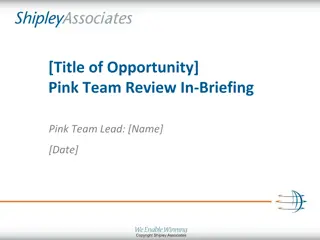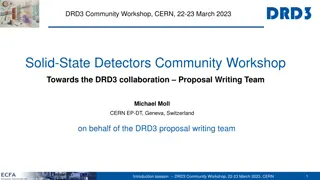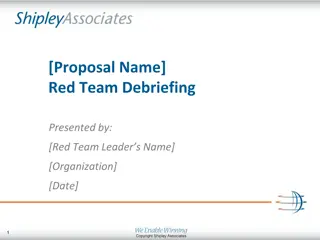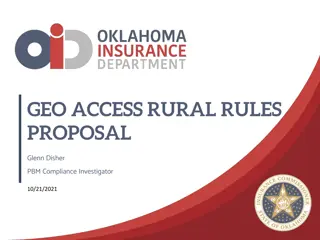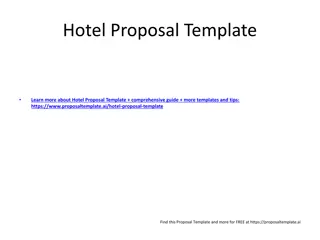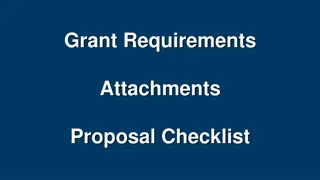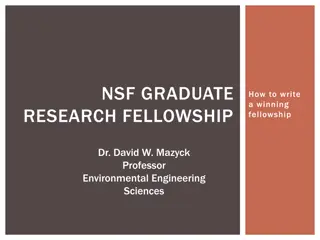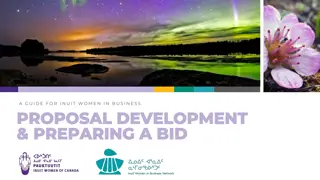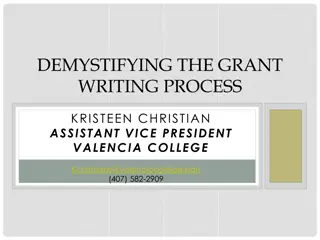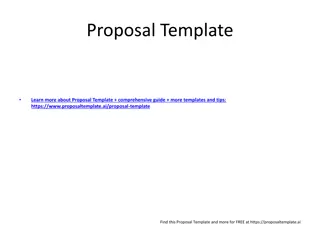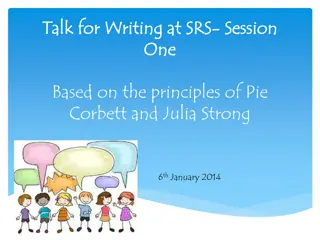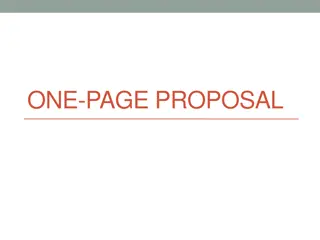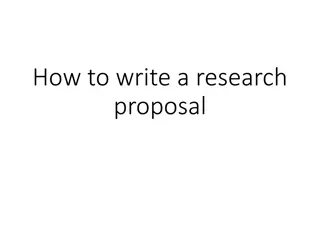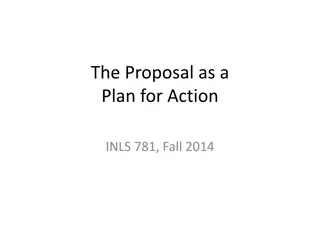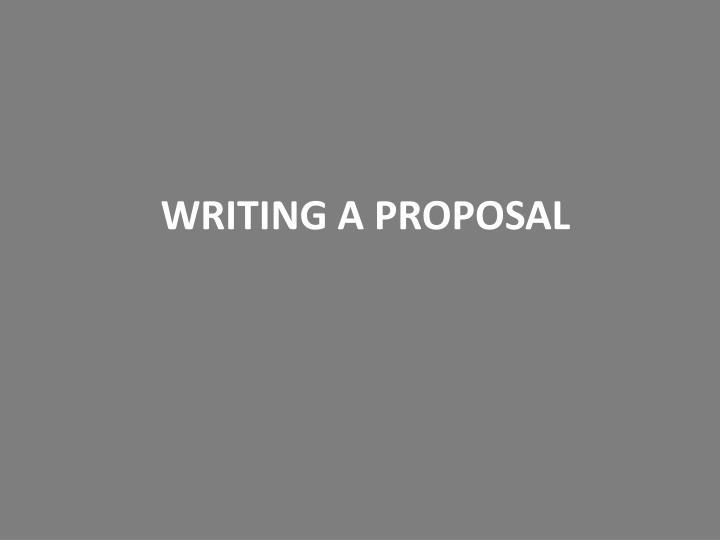
Effective Proposal Writing: Key Similarities & Differences with Reports
Learn about the similarities and differences between proposals and reports, including their content structure and writing styles. Understand the importance of persuasive language and future-oriented constructions in crafting successful proposals.
Uploaded on | 0 Views
Download Presentation

Please find below an Image/Link to download the presentation.
The content on the website is provided AS IS for your information and personal use only. It may not be sold, licensed, or shared on other websites without obtaining consent from the author. If you encounter any issues during the download, it is possible that the publisher has removed the file from their server.
You are allowed to download the files provided on this website for personal or commercial use, subject to the condition that they are used lawfully. All files are the property of their respective owners.
The content on the website is provided AS IS for your information and personal use only. It may not be sold, licensed, or shared on other websites without obtaining consent from the author.
E N D
Presentation Transcript
SIMILARITIES & DIFFERENCES BETWEEN A PROPOSAL & A REPORT Proposals are similar to reports in that they: Are written in a formal/semi-formal style. Are divided into sections with headings Proposals differ, however, in that: Their purpose is to outline a course of action IN THE FUTURE. Many times, but not always, the proposal needs to be persuasive. The target reader should be convinced by what is written and likely to agree to the suggestion. It is often helpful to include the benefits of the request being granted/the suggestions being put into effect, etc.
MOST PROPOSALS CONTAIN: A BEGINNING Usually headed Purpose or Introduction , in which the reason for writing is stated clearly. The purpose of this proposal is to outline the changes to be made to Gordon Terrace offices, as discussed in the committee meeting on 4th June. A MAIN BODY In which the different sections cover the instructions in the rubric. AN ENDING Usually headed Conclusion , in which you do one or more of the following: summarise the points in the main body make reference to further discussion reassure the target reader can also outline the benefits of the proposal being accepted (if this has not already been done in a separate section in the main body).
STYLE: Future & Hypothetical constructions There are many ways to write about the future using both active and passive voices: The future simple tense e.g. We will employ new staff. The future continuous tense e.g. Our research team will be closely monitoring the situation. The future perfect tense e.g. The first stage of the project will have been completed by the end of the year.
STYLE: Future & Hypothetical constructions Certain verbs also suggest the future. These include propose, intend, expect, hope, predict, forecast, look forward to, anticipate, etc. E.g. We predict a profit in the first year of over $2,000. E.g. As we do not anticipate any further problems, the society hopes to hold the first meeting next month. Some adjectives can also be used with a future meaning. These include imminent, potential, probable, possible, forthcoming, future, expected, proposed, etc. E.g. the proposed change of use, the potential danger, future discussion, etc. In addition to the above, hypothetical constructions can be used to write about things that are not certain. E.g. This would mean that, if we could manage to, this should, etc.


